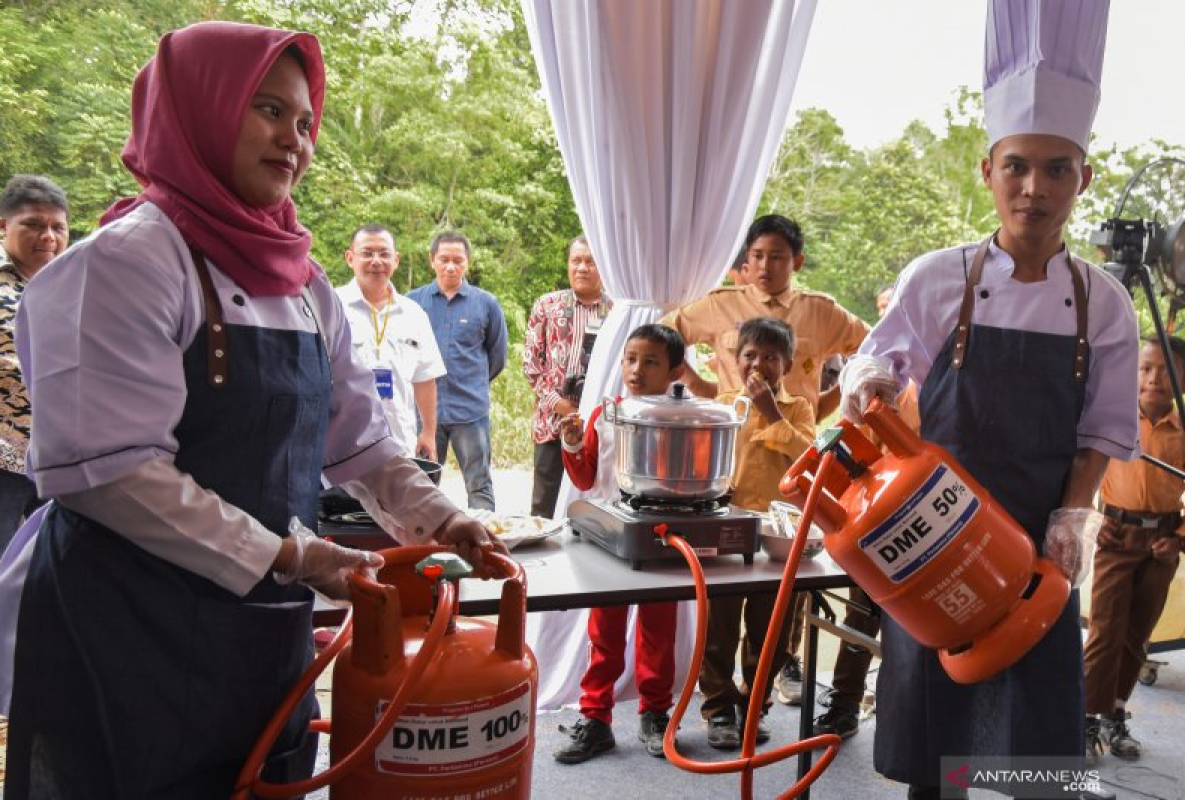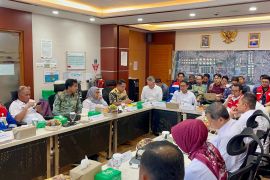With the downstreaming, our coal will be converted into gas. Then, the gas can be (used) as dimethyl ether, and it can replace LNG and coal syngas (synthesis gas). Again, LNG can be utilized for methanol, fertilizer, and petrochemical plant needsJakarta (ANTARA) - The Indonesian government is continuing to maximize the utilization of coal potential in the country through the downstreaming process, Director of Coal Business Development at the Ministry of Energy and Mineral Resources Sujatmiko has said.
Through industrial downstreaming, coal commodities could continue to drive the national economy in the future, he remarked at the Indonesia EBTKE ConEx event here on Friday.
According to Sujatmiko, the government is processing coal to produce dimethyl ether and raw materials for petrochemical plants.
"With the downstreaming, our coal will be converted into gas. Then, the gas can be (used) as dimethyl ether, and it can replace LNG and coal syngas (synthesis gas). Again, LNG can be utilized for methanol, fertilizer, and petrochemical plant needs," he expounded.
Related news: ASSA bestows digital service innovation award on BPJS Kesehatan
Dimethyl ether has potential to be used as a fuel in the future because it can serve as a substitute for LPG (liquified petroleum gas), he added.
Thus, through the gasification of coal into dimethyl ether, the government is seeking to extend the utilization period of coal as a primary energy source, he explained.
Based on calculations by the Ministry of Energy and Mineral Resources (ESDM) in 2020, coal resources in Indonesia stand at 143 billion tons, coal reserves at 38.8 billion tons, and assumed production at 600 million tons per year, Sujatmiko noted.
Related news: Smoking caused chronic obstructive pulmonary disease in 9.2 mln people
The nation's coal reserves are adequate for 65 years, even if there is no addition to the stock, he said.
Nevertheless, he explained, coal production is expected to continue to increase over the next 20 years to meet national and global energy needs.
The ESDM Ministry had earlier recorded that coal production reached just 550 million tons last year. It projected production would rise to 633 million tons by 2025, 684 million tons by 2030, and slightly decline to 678 million tons by 2040.
On account of this, the downstreaming of coal can serve as a primary buffer to anticipate the deficit of gas stock in the country, Sujatmiko said.
"We hope this huge potential in coal can drive the national economy," he added.
Related news: KEHATI seeks support to nurture 162 bamboo varieties in Indonesia
Related news: BRIN developing AI-based platform for natural resource monitoring
Translator: Sugiharto P, Kenzu T
Editor: Fardah Assegaf
Copyright © ANTARA 2021












